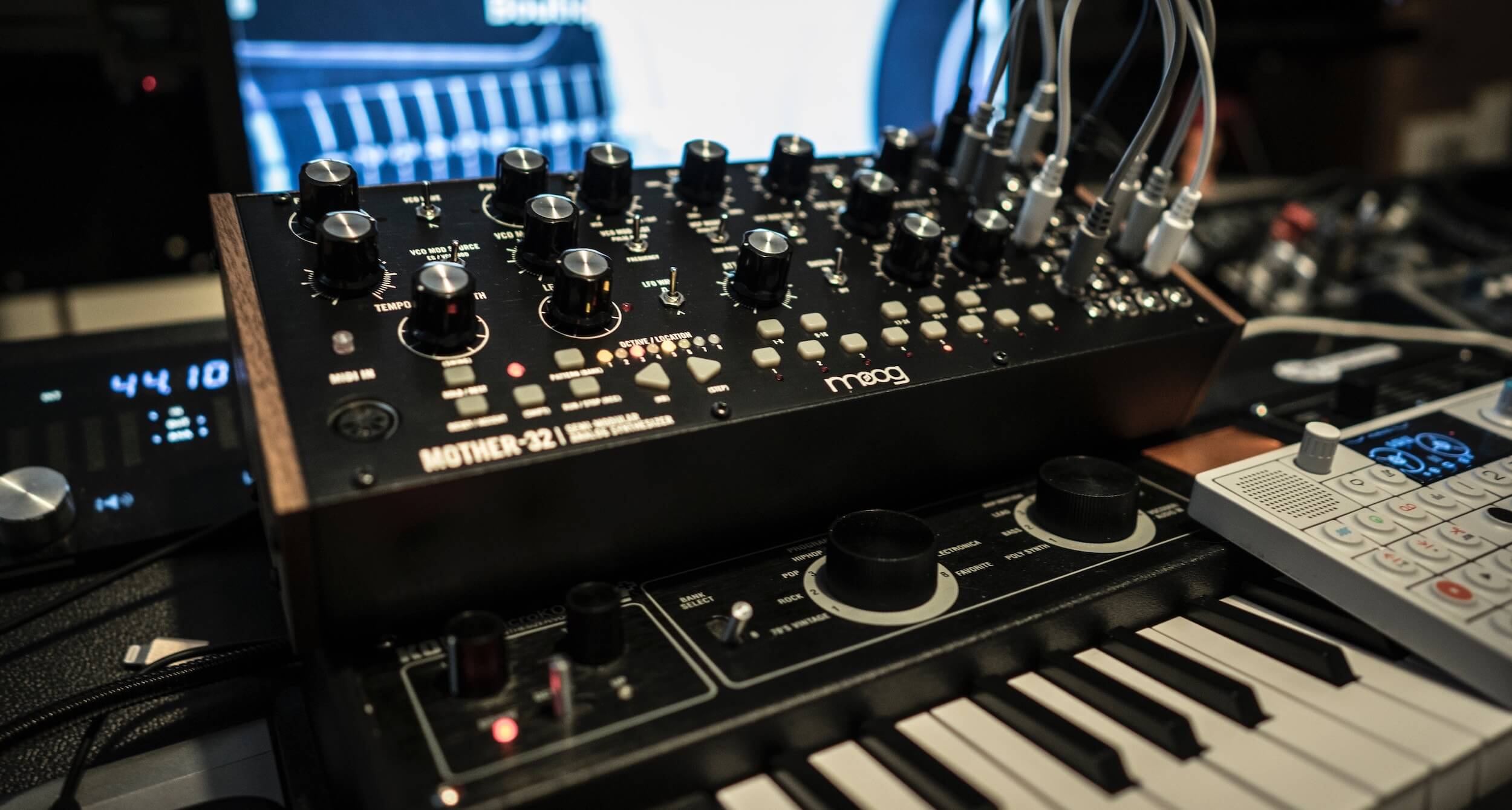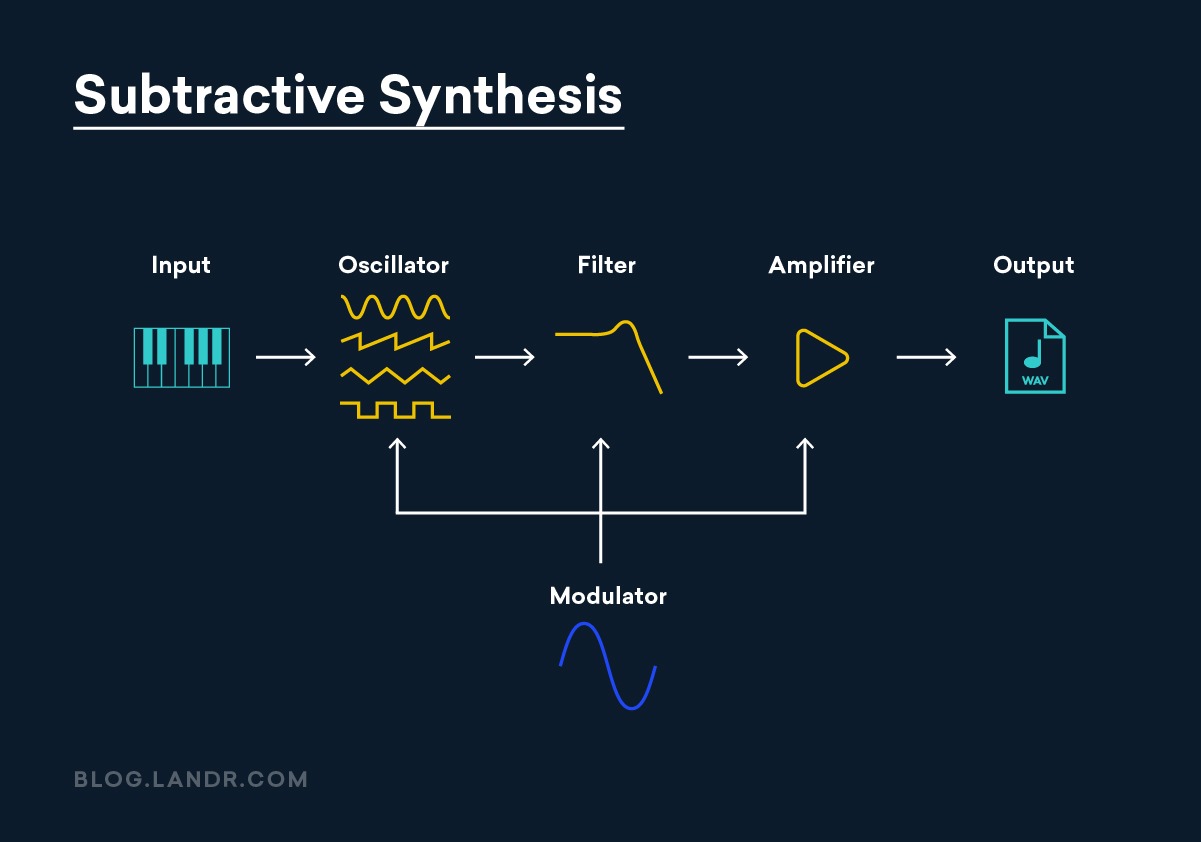Subtractive synthesis sounds like an abstract scientific concept.
However in case you’ve ever used a synthesizer in your music production workflow, chances are you’ve already used it.
That’s as a result of subtractive is the commonest synthesis type. It comes from analog synths, but it surely’s utilized in tons of synth VSTs and digital synths too.
Understanding how to design subtractive synthesis sound is difficult if you’re just getting began, but it surely doesn’t need to be intimidating.
In this article I’ll clarify everything you need to know to grasp your subtractive synths and create your good patch.
What’s subtractive synthesis?
Subtractive synthesis is a technique of synthesizing musical timbres by beginning with a waveform that comprises a lot of harmonic content material and filtering it down utilizing a filter and different processes.
The rich harmonic waveforms I’m speaking about are simple shapes like saw waves and square waves.
These primary waves are straightforward to provide electronically with an oscillator, however, they’re not very fascinating on their own.
To design subtractive synthesis sound musical you must form their dynamics, frequency steadiness, and texture.
That’s where the rest of the processes in subtractive synthesis are available.
Signal flow in a subtractive synth
To understand subtractive synthesis, you must perceive every part within the signal path and the way they have an effect on the sound.
You already know that the oscillator produces the rich waveform that acts as a place to begin to your patch.
The opposite elements in a typical subtractive synth are the filter, amplifier, envelope generator, and LFO.
I’ll undergo each intimately but that can assist you to visualize how a synth works, here’s a diagram that exhibits how every half is related:
In this diagram, the modulator block may seek advice from an LFO or envelope generator. I’ll get to these later.
Most subtractive synths are laid out this manner, however, in case you’re acquainted with synthesizer historical past, you’ll comprehend it wasn’t all the time mounted like this.
Within the first synths ever made, each part was a separate module that needed to be patched manually with cables.
That is known as modular synthesis. You possibly can nonetheless discover loads of die-hard modular synth followers immediately utilizing the Eurorack format.
Lots of immediately’s modular rigs use the identical subtractive structure because of the originals.
Patching particular person modules offer you essentially the most flexibility. However, synth designers realized that most musicians arrange their sign in an analogous manner every time.
That’s when the primary built-in devices just like the Minimoog started to appear. Since then, subtractive synths have had usually the identical signal flow.
Let’s take a look at every part of the sign chain intimately.
Oscillator
Your synth sound begins on the oscillator. Despite the fact that it’s solely the start, the oscillator settings you select have an enormous impact on the sound of your completed patch.
Most synth oscillators supply a selection of a number of completely different waveforms. The commonest ones are:
- Square
- Saw
- Triangle
Square has essentially the most harmonic content material to begin with. That’s why it sounds so buzzy and shiny.
A square wave oscillator will retain essentially the most excessive frequencies after filtering. However, square waves produce other attention-grabbing properties.
Some square wave oscillators have the power to change the form of the square sample itself. In these oscillators the square form is known as a pulse wave. Setting the heartbeat width to completely different values offers completely different outcomes—more on this later.
Saw has the subsequent most harmonics and a barely completely different character. Triangle waves are essentially the most mellow.
Hot tip: Some subtractive synths have a sine wave oscillator. However, most don’t since a sine wave is simple to create by making use of a low cross filter to a triangle wave—more on this within the subsequent part.
Many subtractive synths have multiple oscillators. You possibly can select the form, frequency, and detuning quantity of every oscillator.
Mixing two oscillators of various shapes and frequencies is the way you add complexity to your primary waveforms in subtractive synthesis.
That’s why the final part of your synth’s oscillator part is often a mixer. The mixer combines your oscillator indicators with other sound sources your synth may supply.
These different sources might be a sub-oscillator that performs an octave under your primary oscillator, an exterior audio enter to the synth or a noise supply.
Hot tip: Noise is simply one other tool for beginning off with a posh waveform. Noise will help add presence to the assault of quick feels like plucks and percussion.



